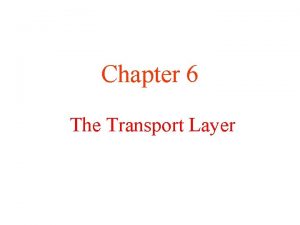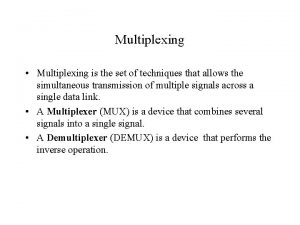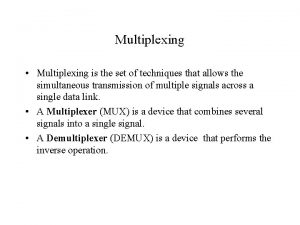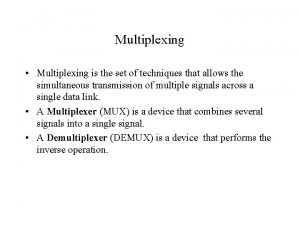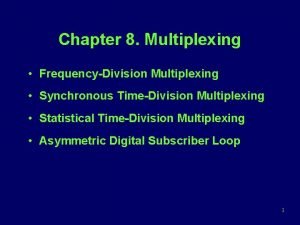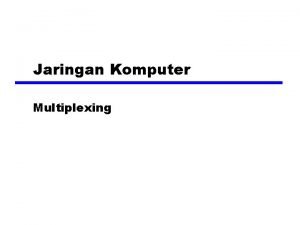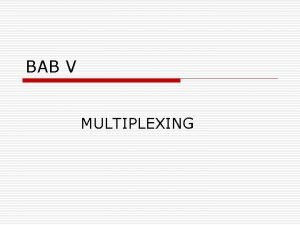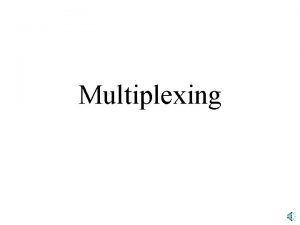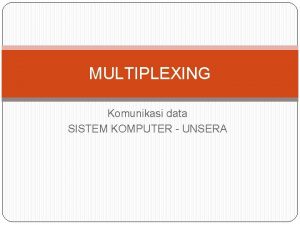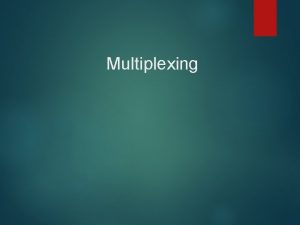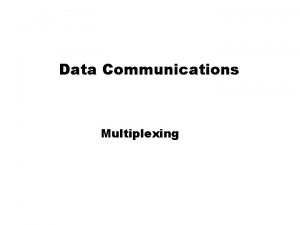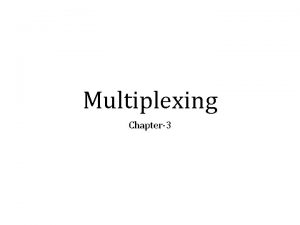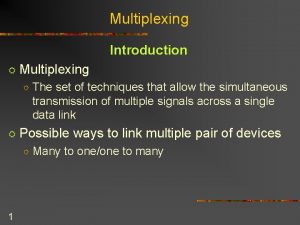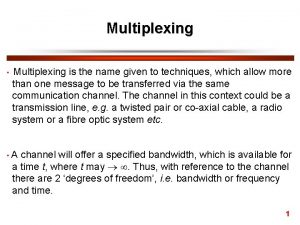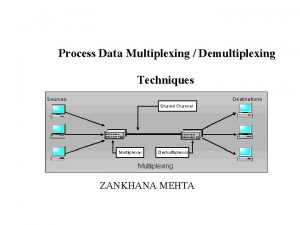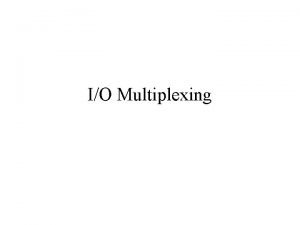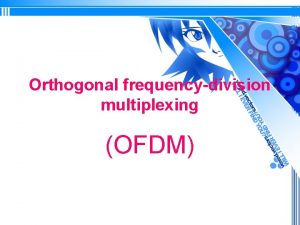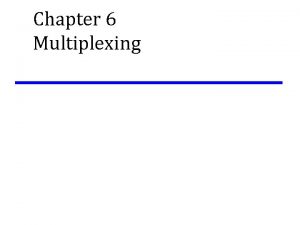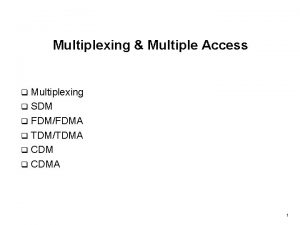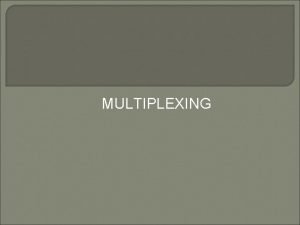Multiplexing Multiplexing is the set of techniques that

























- Slides: 25

Multiplexing • Multiplexing is the set of techniques that allows the simultaneous transmission of multiple signals across a single data link. • A Multiplexer (MUX) is a device that combines several signals into a single signal. • A Demultiplexer (DEMUX) is a device that performs the inverse operation.



11. 2 The Concept of Multiplexing 4 4

Multiplexing in networks Sharing the medium Main purpose is ? 5

Categories of Multiplexing

Frequency-division Multiplexing (FDM) • FDM is an analog technique that can be applied when the bandwidth of a link is greater than the combined bandwidths of the signals to be transmitted.

Frequency-division Multiplexing (FDM) • In FDM signals generated by each device modulate different carrier frequencies. These modulated signals are combined into a single composite signal that can be transported by the link. FDM is an analog multiplexing technique that combines signals.

11. 4 Frequency Division Multiplexing 9 9

Frequency-division Multiplexing (FDM) • In FDM signals generated by each device modulate different carrier frequencies. These modulated signals are combined into a single composite signal that can be transported by the link. • Carrier frequencies are separated by enough bandwidth to accommodate the modulated signal. • These bandwidth ranges arte the channels through which various signals travel. • Channels must separated by strips of unused bandwidth (guard bands) to prevent signal overlapping.



Frequency-division Multiplexing (FDM) • In FDM, signals are modulated onto separate carrier frequencies using either AM or FM modulation.

Wave-division Multiplexing (WDM) • Wave-division multiplexing is conceptually the same as FDM, except that multiplexing and demultiplexing involve light signals transmitted through fiber-optic channels. • The purpose is to combine multiple light sources into one single light at the multiplexer and do the reverse at the demultiplexer. • Combining and splitting of light sources are easily handled by a prism.


11. 7 Wavelength Division Multiplexing • Prisms form the basis of optical multiplexing and demultiplexing – a multiplexor accepts beams of light of various wavelengths and uses a prism to combine them into a single beam – a demultiplexor uses a prism to separate the wavelengths. 16 16

11. 8 Time Division Multiplexing (TDM) • TDM assigns time slots to each channel repeatedly – multiplexing in time simply means transmitting an item from one source, then transmitting an item from another source, and so on • Figure 11. 8 (below) illustrates the concept 17 17

Time-division Multiplexing (TDM) • Time-division multiplexing (TDM) is a digital process that can be applied when the data rate capacity of the transmission medium is greater than the data rate required by the sending and receiving devices.

TDM is a digital multiplexing technique to combine data.

Time-division Multiplexing (TDM) • TDM can be implemented in two ways: synchronous TDM and asynchronous TDM. • In synchronous time-division multiplexing, the term synchronous means that the multiplexer allocates exactly the same time slot to each device at all times, whether or not a device has anything to transmit. • Frames Time slots are grouped into frames. A frame consists of a one complete cycle of time slots, including one or more slots dedicated to each sending device.


11. 9 Synchronous TDM 22 22

11. 12 The Problem with Synchronous TDM: Unfilled Slots 23 23

TDM frames

11. 13 Statistical TDM 25 25
 Transport service primitives
Transport service primitives Upward and downward multiplexing
Upward and downward multiplexing Total set awareness set consideration set
Total set awareness set consideration set Training set validation set test set
Training set validation set test set Tôn thất thuyết là ai
Tôn thất thuyết là ai Ngoại tâm thu thất chùm đôi
Ngoại tâm thu thất chùm đôi Chiến lược kinh doanh quốc tế của walmart
Chiến lược kinh doanh quốc tế của walmart Gây tê cơ vuông thắt lưng
Gây tê cơ vuông thắt lưng Block nhĩ thất độ 2 mobitz 2
Block nhĩ thất độ 2 mobitz 2 Tìm độ lớn thật của tam giác abc
Tìm độ lớn thật của tam giác abc Sau thất bại ở hồ điển triệt
Sau thất bại ở hồ điển triệt Thơ thất ngôn tứ tuyệt đường luật
Thơ thất ngôn tứ tuyệt đường luật Con hãy đưa tay khi thấy người vấp ngã
Con hãy đưa tay khi thấy người vấp ngã Thơ thất ngôn tứ tuyệt đường luật
Thơ thất ngôn tứ tuyệt đường luật Crisp set vs fuzzy set
Crisp set vs fuzzy set Crisp set vs fuzzy set
Crisp set vs fuzzy set What is the overlap of data set 1 and data set 2?
What is the overlap of data set 1 and data set 2? Fucntions
Fucntions Bounded set vs centered set
Bounded set vs centered set Correspondence function examples
Correspondence function examples Set design techniques
Set design techniques Fonctions techniques
Fonctions techniques Cái miệng nó xinh thế chỉ nói điều hay thôi
Cái miệng nó xinh thế chỉ nói điều hay thôi Trời xanh đây là của chúng ta thể thơ
Trời xanh đây là của chúng ta thể thơ Ng-html
Ng-html Tư thế ngồi viết
Tư thế ngồi viết

